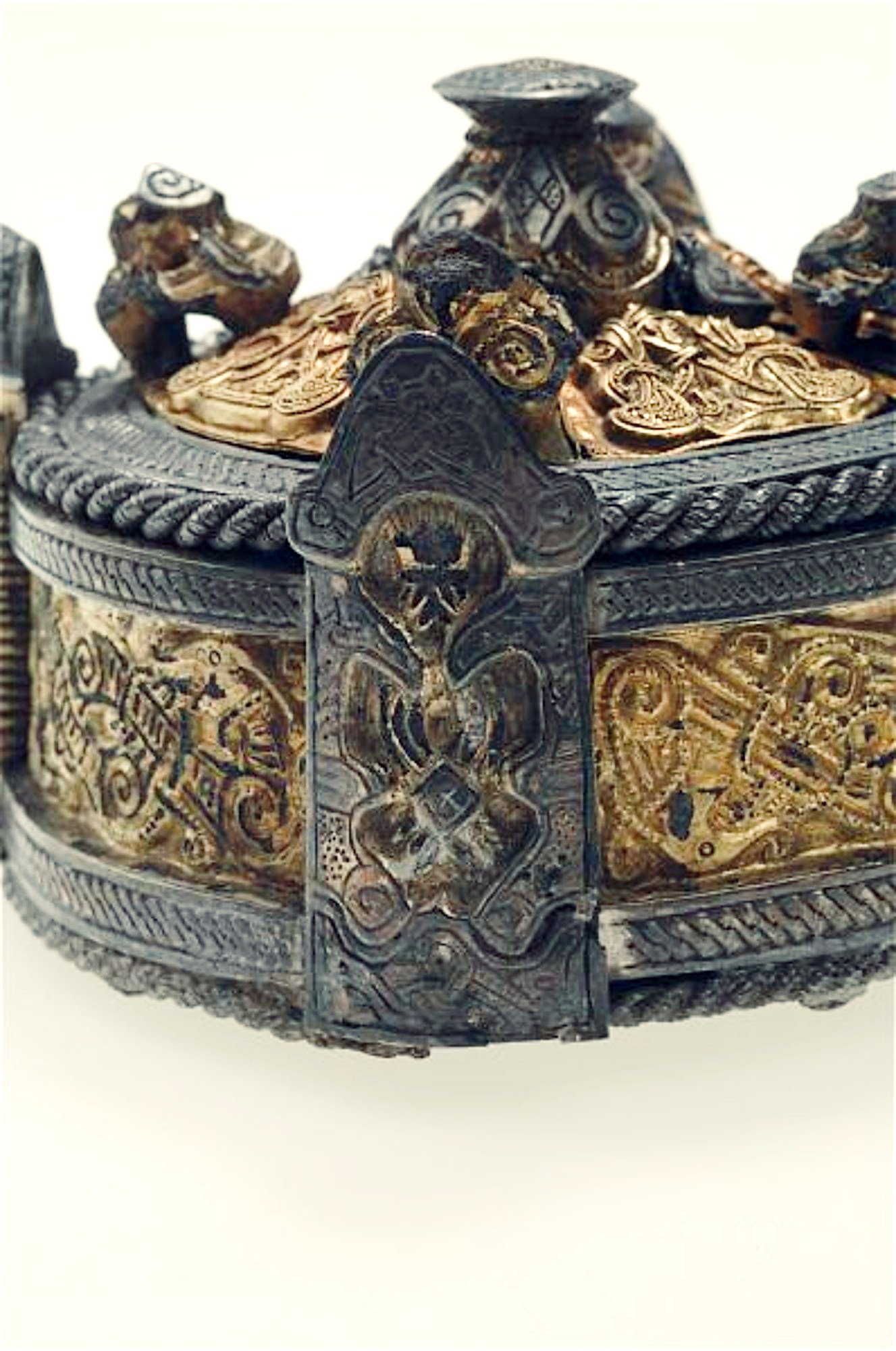In Viking Age Scandinavia (750–1100 AD), a region which was already comprised of much smaller individual communities than the large kingdoms it would later become, the island of Gotland, Sweden would have stood out as unique. Situated in the middle of the Baltic Sea, roughly 80 kilometers from the coast of mainland Sweden, the island was isolated from other communities in Scandinavia during the Viking Age. However, despite this isolation, Gotland would have occupied a strategic position, situated as it was between the Baltic states, Finland, Russia, and the Middle East, as well as mainland Scandinavia and western Europe. Utilizing its position as a middleman between the eastern and western worlds, Gotland became perhaps the most silver-rich region of Viking Age Scandinavia, with over 700 known silver hoards. The hoards contain Baltic jewelry, coins from the Arabic, English, Byzantine, and Frankish spheres, as well as many other precious items. These items, and many raw materials, would have been imported to the island via a network of coastal harbors which would have served as places of commerce, crafting, and social interaction between diverse groups of people. Thus, quite in contrast to its apparent isolation, Gotland was a well-connected region and heavily involved with the world beyond its coasts, at least in an economic sense.
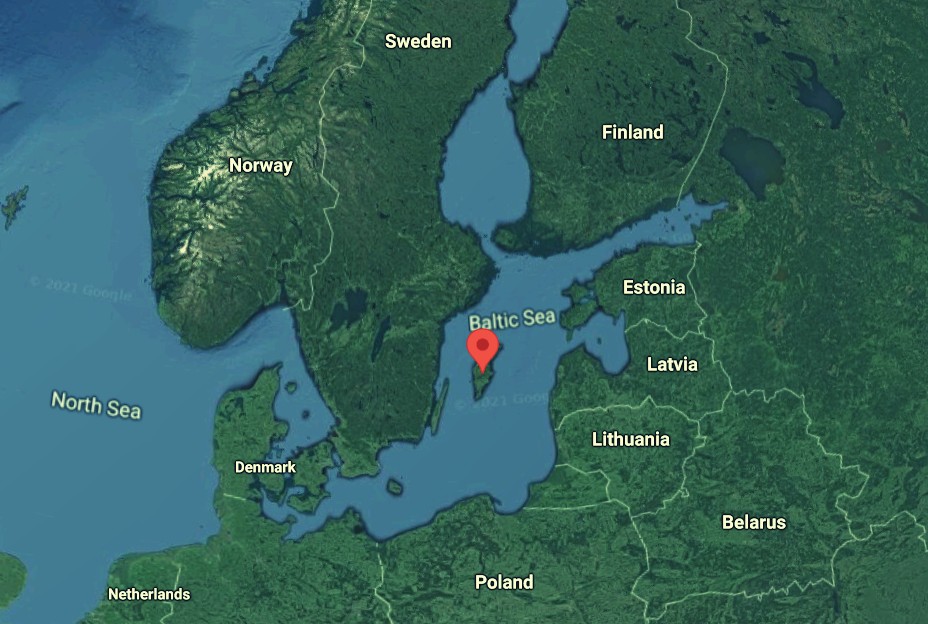
Even with its status as a trade hub, however, the island seems to have very actively maintained a highly insular culture. This would have become very apparent once one left the cosmopolitan flair of the coastal harbors. The landscape remained almost completely rural, with society likely based on independent farmers and landholders, and without the presence of a centralized authoritative body, something of a marked departure from mainland Scandinavia. Rather, Gotlanders are described in the thirteenth century Guta Saga as being fairly decentralised in comparison with their mainland neighbors, and archaeological evidence seems to support this.
Box brooches
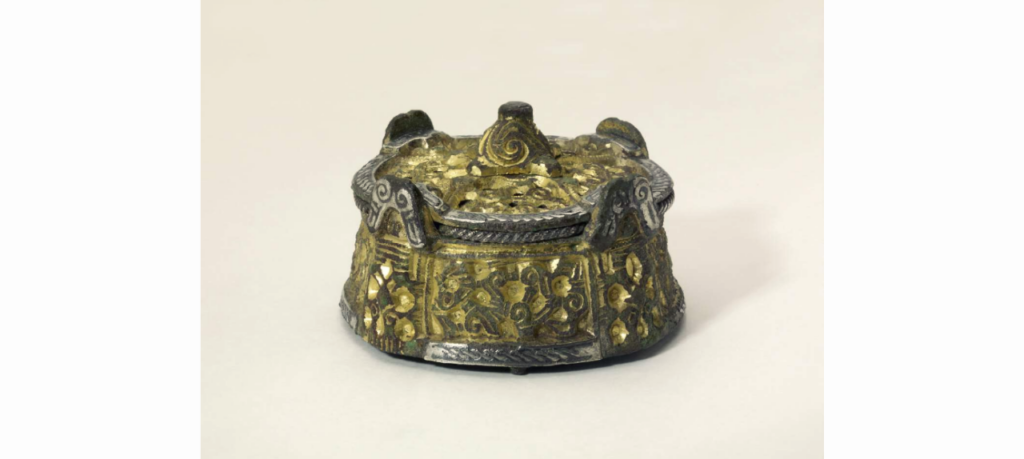
A gold plated box brooch.
Photo: British Museum. 1921,1101.135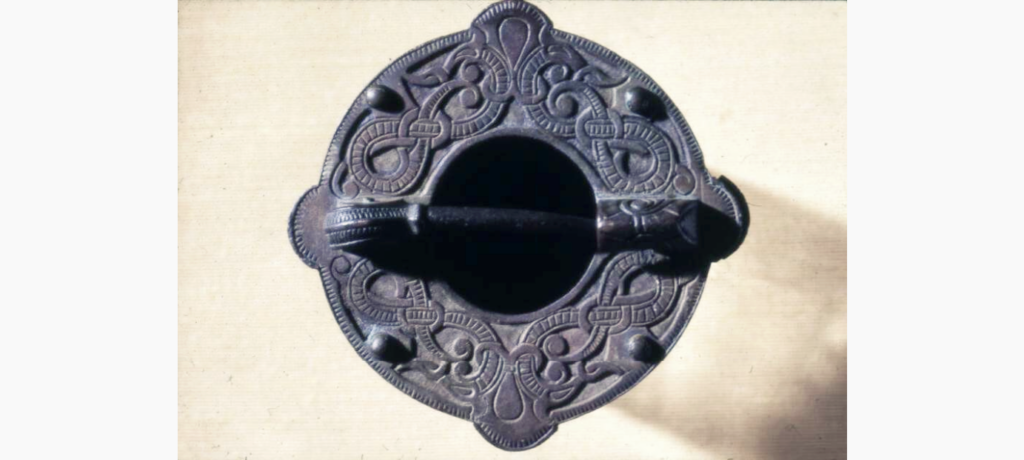
The backside of a box brooch.
Photo: British Museum. 1894,0217.1
The Iron Age archaeologist Jody Joy once poignantly remarked, “…it is not possible to separate technology from the society in which it is located”. This sentiment surely applies to much of the technology of Viking Age Gotland. The insular nature of Gotlandic society prominently manifested itself in the material culture of the island. Gotlandic picture stones comprise an artistic tradition not found anywhere else in Scandinavia at the time, and perhaps most notably, the island developed a wholly unique set of female jewelry, most epitomized in the box brooch (Swedish: dosformat spänne). This brooch style, worn just under the chin to centrally clasp a cloak, was produced throughout almost the entirety of the Viking Age. It reflected the various evolutions of Viking art throughout the time period, but essentially retained the same basic shape: a large round drum, hollow, with a pin on its backside. The uniqueness of these objects to the island cannot be stressed enough; of the approximately 850 brooches found, less than 30 (or roughly three percent) have been found outside of Gotland. The brooch has thus, for decades, found itself at the center of a debate on Gotlandic ethnic identity, namely whether it was used by women to identify themselves as a member of Gotlandic society. While it would be the subject of a much longer piece of writing to assess this debate, it is possible to demonstrate much of the symbolic social meanings that may have attached themselves to brooches in the minds of Viking Age Gotlanders. So, how might we assess the social significance of the box brooch in Viking Age Gotlandic society? It might be useful to think of these objects as having a sort of ‘life’ of their own: they are ‘born’ (made or crafted), ‘live’ for a time (worn by their owner), and finally, they ‘die’ (deposited into the earth). These are all tangible events we can observe through the lens of the archaeological record, and in some cases, the Old Norse texts, to extrapolate more abstract social concepts.
Production – the “Birth”
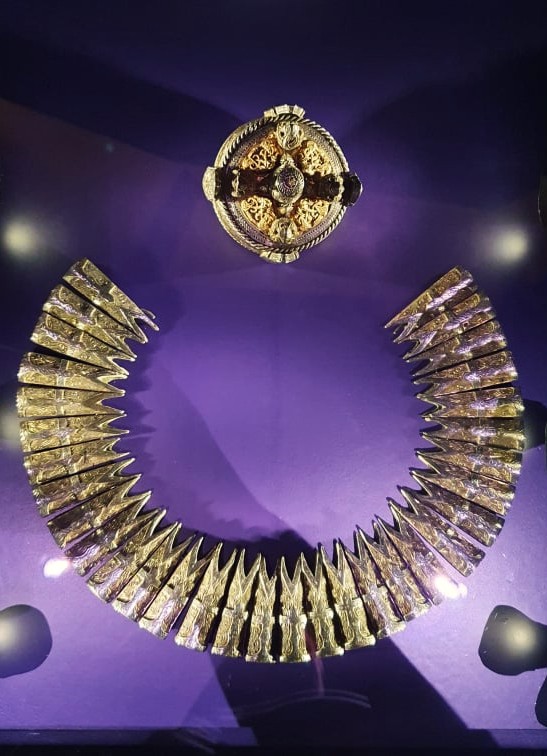
It may seem an obvious statement to say that all box brooches would have begun as raw material, but it is important to note, as this is likely where they would have attained their first significant meaning. Gotland has no sources of precious metals of its own, and therefore nearly all of the materials needed to produce a brooch would have had to have been imported. These materials included tin, copper, and lead for the production of bronze, perhaps from the British Isles and Continental Europe; silver from Baltic jewelry and Middle Eastern caliphates; and gold from Byzantium and Russia. Thus, in the very beginning of its life, the box brooch would have been linked with faraway places, a concept that may have been significant in the Viking Age Scandinavian mind. Indeed, it has been suggested that this may have been a motivation for the first Viking raids: objects from foreign lands carried with them connotations of power and status, portraying elite individuals as worldly and well-connected.
So how did these prestigious materials make their way into the hands of the craftsman? Gotland was wholly unlike mainland Scandinavian communities in the structure of its crafting networks, in that there does not seem to have been any centralization in the manufacturing of metalwork. Metalworking sites are found in urbanized spaces, much as they are on the mainland, but are common in rural spaces as well, far from any major settlement. The archaeological record also shows a fairly even distribution of the raw materials across the island, rather than being concentrated in a few places. This could indicate that materials were brought directly to the craftsman by their clientele, in a sort of commission-based system. This is further compounded when we think about the ratio of brooches found on Gotland versus off of it, as mentioned above. It is clear that these items were not being exported, at least not in any significant way. This is noteworthy, as it illustrates a more personal connection and involvement with the brooch than simply purchasing it at a market. It also represents a more active choice by the client to own such an object.
In looking at the workshops themselves, we find further evidence for a social significance ascribed to the brooches at their ‘birth’. For instance, one such site is Stora Karlsö, a small and sparsely settled island just off the coast of Gotland, which contained molds for box brooches, but also molds for mainland style brooches as well. This indicates an awareness of outside styles by Gotlandic craftsmen. However, mainland-style brooches are almost never found on Gotland itself. Although they may have been produced there, it is likely they were exported. What this means, then, is a conscious choice or preference by Gotlandic individuals to wear their own native style.
Ownership – the “Life”
We have established that a contractual, commission-based system would have been in place for the production of box brooches; so then, who were the so-called clients? Who was doing the commissioning and wearing these brooches? The answer to this can most likely be found in graves, and more specifically, the graves of girls as young as five years old. It is at this age when young girls seem to have been accorded their own individual graves, rather than being buried with family members. This could imply that the owning of a brooch marked a transition in a girl’s life, a sort of coming-of-age ritual. It would also imply that the brooches were not necessarily commissioned by the individuals who would actually own them in life. This narrows down our method of exchange to two main pathways: either a brooch would be given as new and commissioned by family or some other community member or passed down from generation to generation. The latter is based on a number of box brooches that have been found in graves far younger than themselves, which also ties in well with the tradition of heirloom objects in the Norse written sources. No matter if it were a newly made object, or an old family heirloom, the giving of a box brooch would have marked an important occasion, and perhaps even served to reinforce family history. Given their status as prestige items, as well as the social relationships they were bound into, box brooches could not have been parted with lightly.
It becomes significantly more difficult to trace the social aspects of wearing a brooch with archaeology alone once we leave workshop sites and graves. For this, we might briefly turn to the Old Norse written sources instead. Here, we find a variety of characters and individuals who possess objects so important to them that they become a large part of their identity. It is almost impossible, for example, to think of Thor without his hammer, Mjölnir, or Odin without his spear Gungnir. Outside of weaponry, we also have examples of jewelry, such as Freya and her necklace, Brísingamen. Outside of the more well-known pantheon of deities, we also have Icelandic poems like Skáldskaparmál, that gives a sort of set of social rules that state that a woman may be referred to in terms of the female attire, gold, and other precious items that she owns, indicating that an individual’s social identity could certainly be bound to her jewelry. We do find some evidence of this sort of personal association between object and individual on Gotland. Several box brooches have been found that contain runic inscriptions, such as one particular late tenth-century example from Klinte Parish, Gotland, which was in use for about fifty years. The inscription on this brooch states “Öde carved the runes on Bödny’s brooch”. Here, we have the name of an owner (Bödny), and another individual (Öde), perhaps the craftsman. From this, it is at least possible to say that the brooch was personally owned by an individual, and also may have represented a relationship or bond between two people— the craftsman, and the owner.
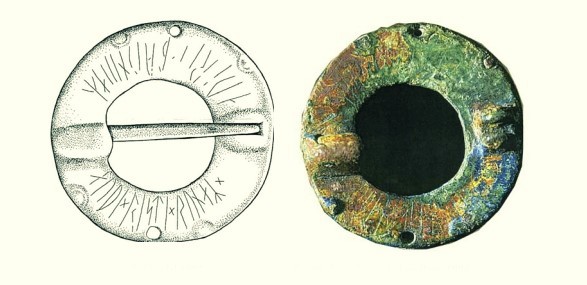
Illusration: B, Händel 1982. Photo: B, Lundberg 1996. Riksantikvarieämbetet.
Deposition – the “Death”
Thanks to the large number of excavated brooches, we have a clear picture of their deposition norms, which broadly fall into two categories: burials and hoards. In the former, the brooches are nearly always placed right under the chin, where they likely would have been worn in life, and often arranged with various combinations of several other native Gotlandic jewelry types: animal-head brooches, worn in pairs at either shoulder, and two types of pendants, fish-head, and sieve-and-ladle. This likely represents the idealized way in which a Gotlandic woman was to present herself. Having such a standardized style would have served to reinforce group identity and belonging.
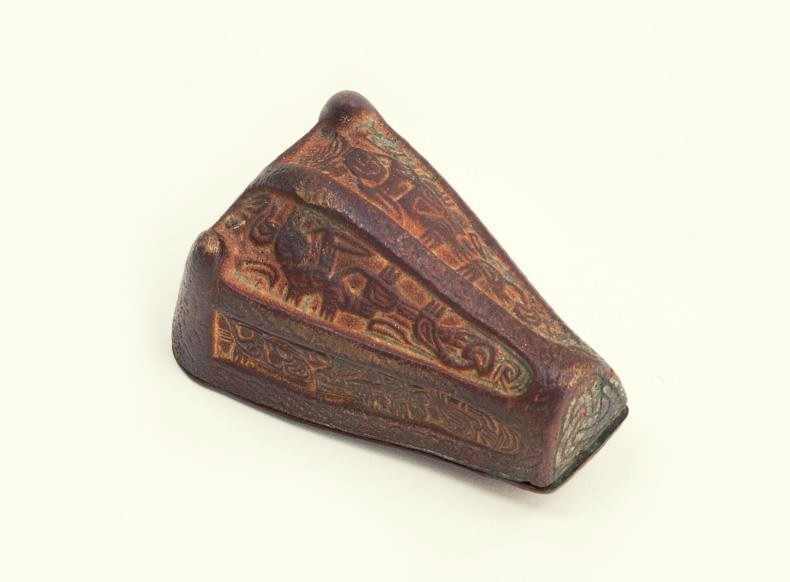
Photo. Anna Danielsson. Göteborgs stadsmuseum 2012.
There is, however, also a remarkable amount of individual agency displayed in the graves when looking specifically at the box brooches. We can refer, in particular, back to the idea of heirloom brooches, passed from one generation to the next. A brooch that is far older than the grave in which it appears likely represents an active choice to take that item out of circulation, rather than simply following established custom. Exactly why this choice was made is nearly impossible to know. Could it be that there was too much wear and tear on the object, and it was time to retire it? Did the individual have no one to pass it on to? Was it an item that was supposed to go with this individual to the afterlife? Or was it simply out of fashion? Nevertheless, it was indeed a conscious act. Brooches found outside the bounded area of Gotland, however, may in some cases be easier to interpret. Though box brooches found outside of the island are not common, those examples we do know of have often been found in quite evocative contexts, highly distinct from those on Gotland. One such example is a box brooch that was found in a late tenth-century grave associated with the ring fortress at Fyrkat, in Denmark. This individual was likely a völva, a type of religious ritual specialist. She was found with a brooch at least 50 years old at the time of deposition, that had been transformed into a small cup and likely used in performative ritual. We might interpret this as not only a tying of her identity to Gotland but also perhaps a supernatural appeal to an ancestor, as suggested both by the age of the brooch and the use of it in a ritualistic context.
A box brooch was far more than a simple fashion statement. These items were highly localized and bound to crafting, exchange, ownership, and deposition traditions specific to the island. Through the brooch, an individual might display their wealth, worldly connections, familial relations, and belonging to a very private and exclusive culture. Likewise, they could also serve as a foundation of various relationships within said culture, between craftsmen and individual, family and community, and ancestors long dead. These were, in essence, an integral component of social life and agency on Viking Age Gotland, and as distinct as the culture that produced them.
Cover Photo: Christer Åhlin. Statens Historiska Museum. SHM: 120461.
Text: Derek Parrott, 2021. Copyright 2021 Scandinavian Archaeology.
Further reading:
Viking Age Gotland:
Carlsson, Dan. 2015. Between East and West: Economy and Society on the Island of Gotland. Maritime Societies of the Viking and Medieval World, ed. by James Barrett and Sarah Gibbon Leeds: Maney Publishing. pp. 62-67.
Box brooches and identity:
Parrott, Derek. 2020. Gotland’s Insular Jewelry: Using Object Biography to Answer Questions of Ethnicity. The Apardjón Journal for Scandinavian Studies.
Thedéen, Susanne. 2012. Box Brooches beyond the Border: Female Viking Age Identities of Intersectionality and Transition to Womanhood in Viking Age Gotland. Stockholm Studies in Archaeology. 58 (1): 61-79.
Object Biography:
Kopytoff, Igor. 1986. The Cultural Biography of Things: Commoditization as Process. The Social Life of Things, ed. by Arjuth Appadurai Cambridge: Cambridge University Press. pp. 64-90.
Objects and agency:
Gosden, Chris. 2005. ‘What Do Objects Want?’, Journal of Archaeological Method and Theory, 12 (3): 193-211.
Metalworking on Viking Age Gotland:
Gustafsson, Ny Björn. 2013. Casting Identities in Central Seclusion: Aspects of non-ferrous Metalworking and Society on Gotland in the Early Medieval Period. Stockholm: Stockholm University.
About the author

